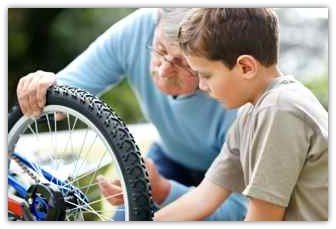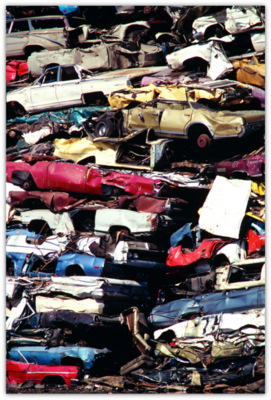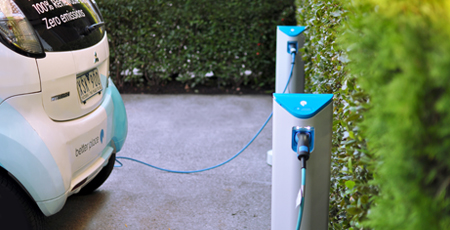If, like me, you are trying to live more sustainably, there is much to be positive about.
In the world of fashion, slogans like ‘ethical fashion’ and ‘slow fashion’ are joining the mainstream, while the trend for upcycling, recycling and restoring or buying vintage clothes and jewellery is continuing.
And despite the economic climate Fair Trade sales have been increasing year on year.
Status anxiety
As consumers become more aware, and more discerning, businesses are having to respond. The intellectual climate is slowly changing, and the popularity of books like Alain de Botton’s Status Anxiety and Oliver James’s Affluenza, are testament to this. Both books throw light on how our obsessive pursuit of status and wealth through the acquisition of more and more ‘stuff’ is making us feel empty and unwell.
I’m certainly not alone in striving for a more meaningful, less materially driven existence, which also does less harm to people and planet, but it’s not always easy to be green.
The art of repair
Unfortunately the dominant business model is still one where planned obsolescence, both in terms of style and functionality, is common practise. I was recently surprised to discover that it’s virtually impossible to buy an electronic kettle with a ten year guarantee. Many electronic devises are either unfixable, or become obsolete because technology is progressing so rapidly, and parts are no longer manufactured for products that are only a few years old. There are a growing number of UK businesses going against this mainstream grain of consumption and disposability, and the consumer demand for them is growing.
 Bike repair, and vintage car restoration businesses are springing up across the UK where I live, but also in the US and Australia. Mid-century furniture is now considered desirable and the demand for vintage items, and their re-vamping and re-upholstery is increasing.
Bike repair, and vintage car restoration businesses are springing up across the UK where I live, but also in the US and Australia. Mid-century furniture is now considered desirable and the demand for vintage items, and their re-vamping and re-upholstery is increasing.
This wonderful short documentary illuminates how, in a small corner of east London, the art of repair is alive and well.
Guilty driving
It is becoming increasingly possible to weave low impact living into more areas of our lives, but for me, one major area of concern is owning and driving a car. Most of us have one, most of us feel we need one, and even if we try to minimise local driving, it’s a real challenge to live without one.
But the car industry is one of the world’s most polluting sectors and vehicle manufacturers usually stop making and selling parts ten years after a new model is offered for sale.
This business practice is clearly designed to encourage people to buy a new car, and scrap the old one when parts are no longer available.
 In my case, it’s the used car industry I’m supporting, but old bangers generally don’t last that long, and it’s not a good feeling waving goodbye to a broken vehicle that you know is only adding to the waste mountain. So what are the alternatives?
In my case, it’s the used car industry I’m supporting, but old bangers generally don’t last that long, and it’s not a good feeling waving goodbye to a broken vehicle that you know is only adding to the waste mountain. So what are the alternatives?
Old car versus green car
Recently I’ve been looking into the carbon emissions and pollution associated with having and driving a car. I’d always assumed that a hybrid, low emissions, green or even electric car was the greenest option. But after a certain amount of research, it’s clear that this isn’t necessarily the case.
Tank-to-wheel fuel consumption is only part of the problem and a huge amount of the environmental impact of buying a car is not in the driving, but the infrastructure, the manufacture and scrapping. According to figures released by the Environmental Transport Association before the average car leaves the showroom it has clocked up 6 tonnes of CO2.
There is a considerable amount of data to support the theory that keeping and caring for a vehicle long term, for say two or three decades has much less of an impact than buying a new, green or even electric vehicle.
Additionally, if cars are well designed initially they tend not only to last mechanically, but also aesthetically. The current popularity of vintage and classic vehicles proves that good design lasts. Companies like VWHeritage, and British Classics in the UK, Wolsburg West and Kanter Auto Products in the USA, and Antique Auto Parts and Just Kampers in Australia all sell genuine original spare parts and quality repro parts for classic, vintage and out-of-production cars.
David Ward is the managing director of VW Heritage and he is keen to support people who are want to keep and care for the same vehicle long term by sourcing and supplying VW parts, he says:
“Classic and vintage VWs were built to last, they might not be perfect, but having survived 30+ years people want to keep hold of them and we want to help them to do that. Classic vehicles are part of everyone’s history; VW Campervans and Beetles have become iconic because so many people have fond memories of them, and for that reason it is something that so many owners cherish.”
Emotionally Durable Design
In his book Emotionally Durable Design: Objects, Experiences and Empathy
Brighton based Professor Jonathan Chapman explores how it is necessary for us to have experiences with our things in order for us to want to keep them long term. He describes how it is an inherent part of our human nature that keeps us striving for what is new and fresh, so that we want to keep hold of our things only as long as they sustain our empathy.
Frequently objects are thrown away before they are even worn or broken. He argues that objects need to be designed which sustain our interest and empathy for longer. Keeping the same cherished vehicle for decades is a great example of this, where family holidays, road trips and the hours of effort that have gone into its repair all create positive and bonding experiences.
On a basic level, we can take responsibility by asking ourselves whether we need that new lap top, do we really have to have the shiniest, newest iPhone, and can we fix our existing car rather than buying new?
If obsolescence is an accepted part of the current business model, then we can attempt to reject that in our own small way by sourcing and buying products that last, products that are robust, beautiful and well designed.
Over to you: Do you make it a habit to repair or restore anything? And if so, where did you learn your skills?
 Tara Gould is a writer, journalist and editor writing about ethical business, sustainable design and earth friendly living both on and offline. She is also a published writer of short fiction and has had plays broadcast on BBC Radio 4. You can find her at www.ethical-business.eu and follow her on @EthicalBizTara.
Tara Gould is a writer, journalist and editor writing about ethical business, sustainable design and earth friendly living both on and offline. She is also a published writer of short fiction and has had plays broadcast on BBC Radio 4. You can find her at www.ethical-business.eu and follow her on @EthicalBizTara.
______
Shared once again at the lovely Jess’s IBOT along with dozens of other interesting posts




